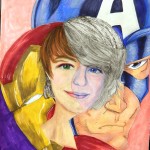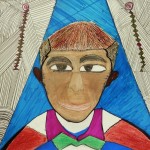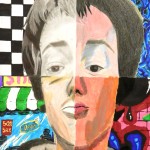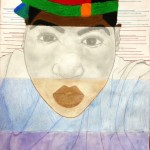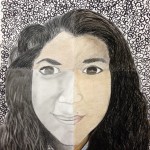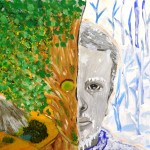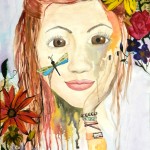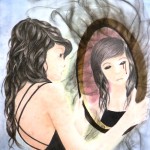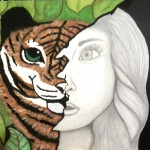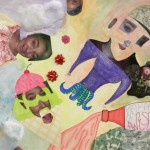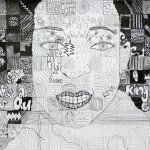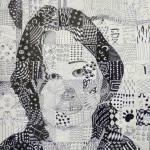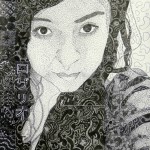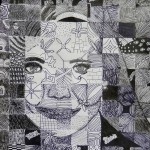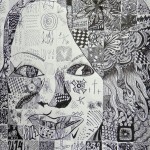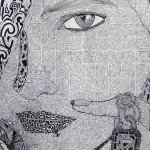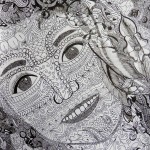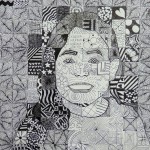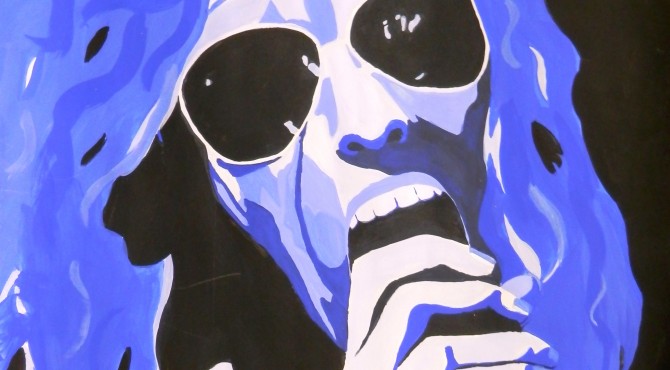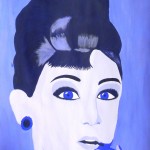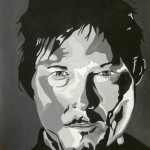Art II students recently explored the genre of the “selfie.” For this project we worked with four media in one piece — the student’s choice of: graphite, colored pencil, ink, art marker, chalk pastels, oil pastels, or watercolor. This gave students the opportunity to display their mastery of several media in one artwork. And it made for some lovely and unexpected results!
Posts Tagged with portraits
Art IV – Expressive Self-Portraits
Art IV students recently studied and completed Expressive Self-Portraits. I left these very open to interpretation with the request that they explore a variety of media. The result is an interesting variety of portraits that employ everything from ballpoint pen to old book pages.
Chuck Close inspired portraits
I’ve taught a similar assignment; however, this time we put a new twist on it. Portraits were broken down into tiny squares ala Chuck Close, then value was interpreted with black and white symbols or designs. This assignment required a lot of fortitude on the student’s part, but as you can see, there are some lovely results!
Mona Lisa. . . SMILES?!
In Art I, we are studying art of the Italian High Renaissance. We’ve discussed how da Vinci’s Mona Lisa,, besides being the most famous painting in the world,, is also among the most parodied.
Art I students, here’s your extra-credit opportunity! In the comment box below, post your favorite Mona Lisa parody. Give the title and artist, or the website, so that I can look it up. To receive credit you must explain why this is your favorite, because there are so many to choose from! The caveat: you cannot post one that has already been posted.
Anyone is welcome to post. . . extra credit notwithstanding!!
Here are a few favorites of mine…
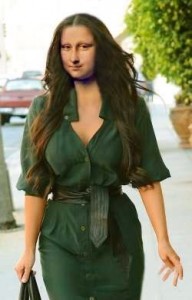


Monochromatic Pop Art Portraits
Advanced Painting students recently finished these fantastic celebrity portraits! This lesson focuses on a monochromatic color scheme, and the Pop Art movement of the 1950’s and 60’s – particularly the graphic art of Andy Warhol, Roy Lichtenstein and the like. I closely followed Kim Bartel’s great lesson on The Incredible Art Department’s website. After a couple of years doing this project, I’ve found that a few things factor into students’ success:
- Students should complete a painted grayscale and a monochromatic value scale. I tell them they need to experiment with the color they are planning on using for their portrait because mixing it with black or white will alter it considerably, especially black.
- after students have worked with mixing colors and creating values and are comfortable, they should begin their portrait. it’s best to work from a black and white photo — if they don’t have this, a grayscale copy should be made. We generally tried to crop photos to about 5″ x 7″. We were working on 14″ x 21″ paper, so this worked out almost perfectly. Students simply gridded up from 1″ boxes to 3″ boxes.
- Students first outlined all areas of value in their photo. I worked with them quite a bit on this, getting them to “see” areas of value rather than simply a nose or an eye, etc. Sometimes I would suggest turning the picture upside down so they would be freed from their conception of what they were drawing. Once they began to think of these faces as just different shapes of value, the project began to click.
- The next step was to grid this up onto their large paper. They started with a light outline drawing and then laid in all the amoebic looking shapes for the different values. They numbered these from 1-5 on their photo (1 – lightest value; 5 – darkest value) and then put the corresponding numbers on their large drawing. ready to paint.
by Amber R. by Cortney M. by Hannah C. by Shelby B. by Katee G. - Now the fun part! Each student needed simply one color of paint, plus black and white. I had them paint a 5-box value scale to correspond with their numbered portraits. This way they had a reference as they painted, and for each new class period.
- It was neat to observe how, even in the context of this uniform assignment, each student had his/her unique style and technique. It was a lot of fun, and produced some awesome results!! 🙂
Mona Lisa…still smiling
Poor Mona Lisa. Leonardo da Vinci brought her to life about 507 years ago, and she will not be left alone. She is the most viewed painting, the most talked about, the most parodied. Here are a few spin-offs that I liked…

